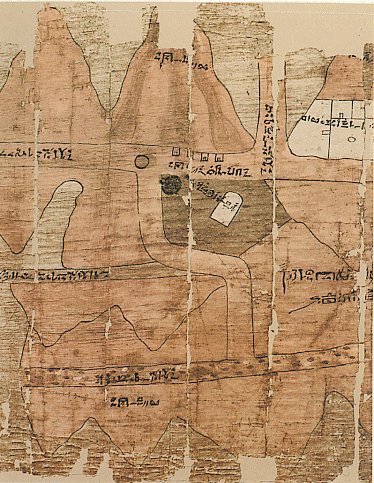In ancient Egypt, around the time of Seti I (1320 B.C.), the first gold treasure map known was created. Today, in the Turin Museum is a papyrus and fragments known as the “Carte des mines d’or.” It pictures gold mines, miners’ quarters, road leading to the mines and gold-bearing mountains, and so on.
Where is the gold mine located? As it is well known there is always something a little vague about them, to throw you off the trail.
Modern thought is that it portrays the Wadi Fawakhir region in which the El Sid gold mine is located, but the matter is far from settled.

The gold of the mountains, as the scribes of Ramses III called it, was found mainly in the Eastern Desert and Nubia. The Koptos gold for instance was mined in the Bekhen mountains. Seti gave these mines to a small temple he had built and dedicated to Amen, Re, Osiris and a number of other gods. The workers mining the gold, the “flesh of the gods”, for the temple were exempt from any other work.
In the Wadi Hammamat where gold-containing quartz was found, the underground quartz veins were mined by crushing the rock before the gold could be extracted. This required a great deal of manpower, provisioned only with difficulty in these deserted regions. Other pharaohs tried to follow Seti’s example by excavating wells in various location, with little success. Another attempt of Seti I resulted in a dry well 120 cubits deep which was abandoned. Only the perseverance of his son Ramses II brought success.
No comments:
Post a Comment